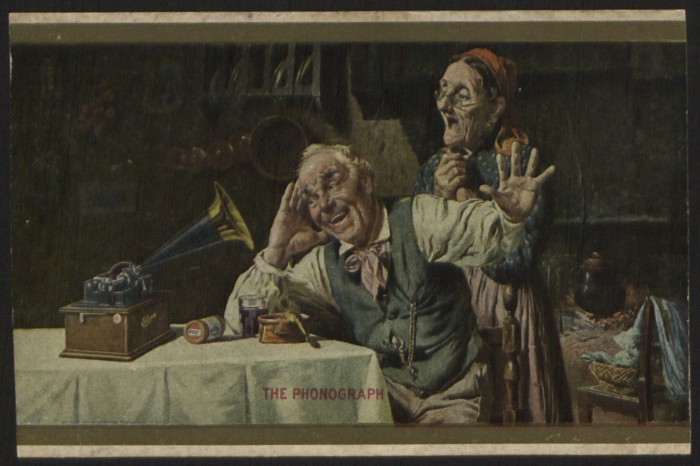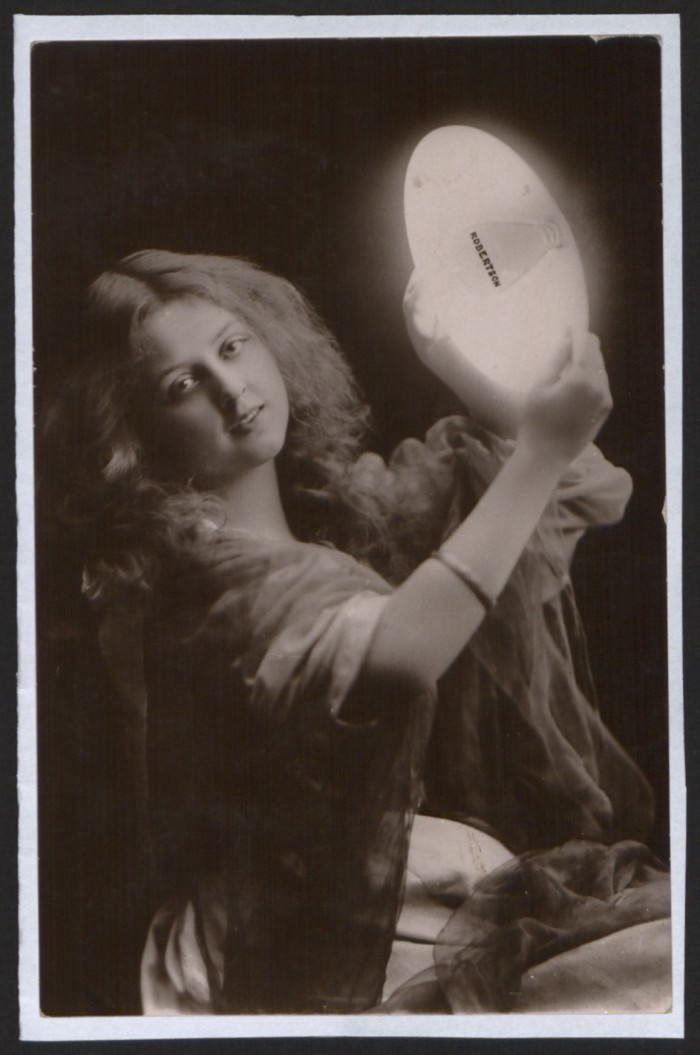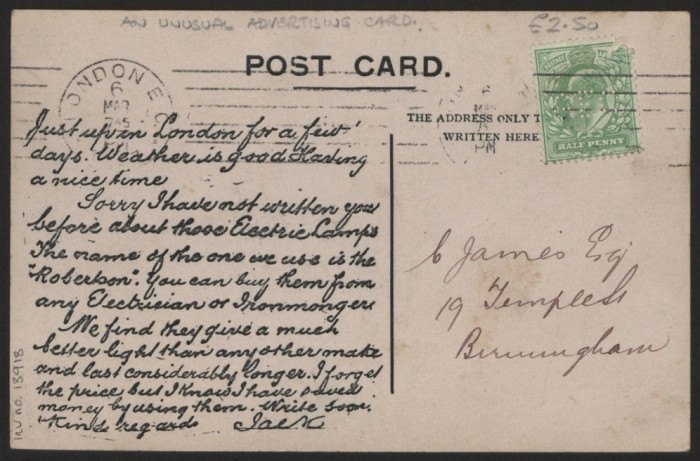The Edwardian era saw a craze for the postcard in Great Britain with the Post Office handling over 600 million in 1903 and an estimated 800 million or more in 1910. The trend was just as widespread and longer-lasting on the continent and North America. There were postcards for every occasion and they were both cheap to buy and to send.
Postcards appealed to the public, they were economic to mass produce and were attractive. With up to five daily deliveries, sending a postcard was the equivalent of a telephone call.
Advertisers took advantage of this popularity to generate publicity and influence consumers. Indeed the earliest advertising postcards in Great Britain were produced only shortly after the Post Office began accepting postcards. By the beginning of the First World War most firms had their own postcard.
Styles of advertising cards varied from miniaturised versions of posters, to celebrity endorsement, to a portrayal of the product in different ways, to more subtle product references. Services which needed to correspond with their customers used postcards to combine publicity with necessary communications. Many postcards often celebrated the latest invention or craze, whether technology, entertainment, or fashion amongst many others.

Print, Advertising Card for the Edison Phonograph, c.1905. Inv 13937 [1]
This postcard shows an Edison cylinder phonograph being enjoyed immensely by a couple in their home. The phonograph was invented by Thomas Edison in 1877 and was the first device to be able to reproduce recorded sound. The postcard illustrates the product’s main appeal in being affordable enough for home entertainment. Previously people had to attend concerts to hear ‘The Wonderful Talking Machine: Edison’s Latest Phonograph’ (advertisement, 1890 [2]), but as this postcard illustrated they could now listen in their own homes.

Postcard, Advertisement Card for Robertson Lamps, 1901-1910. Inv 13918 [3]

The reverse of this Robertson Lamps postcard demonstrates another technique used in postcard advertising. Until January 1902 one side of the postcard had to be reserved entirely for the postal address. Britain was the first nation to allow both the address and a message on the same side, America not following suit until 1907. Once the regulations were relaxed advertisers were able to use more eye-catching, full size images and usage increased. Alongside a striking image, this postcard has a written message on the reverse extolling the virtues of Robertson Lamps, as if written to a friend. This was another common strategy for the postcard advertiser.
Collectors of postcards were common, evidenced by messages on cards such as ‘another one for your collection’ and ‘here’s the latest card for your album’. Series of cards on a particular theme were produced primarily for the collector, such as our Marconi Wireless series [4].
Postcards continued to be popular until the doubling of the postal rates in 1918, a second temporary increase in 1921-22, and the emergence of colour magazines, photography and increasing prevalence of the telephone.